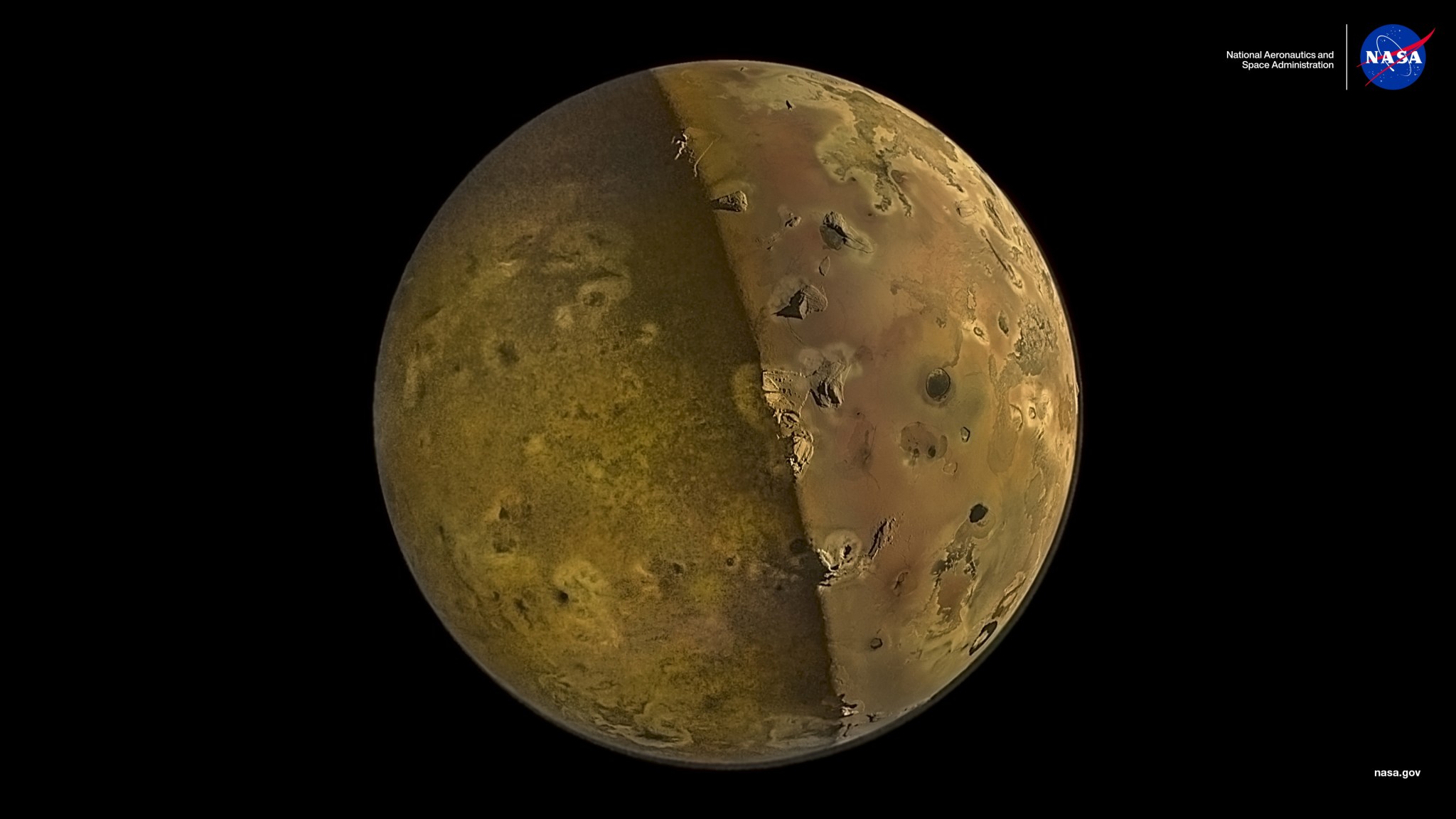Jupiter’s Volcanic Moon Io
- Juno spacecraft captured detailed imagery of Io’s volcanic surface during its close flyby on December 30, 2023.
- The image was taken from about 930 miles (1,500 kilometers) above Io and shows Io’s night side illuminated by “Jupitershine,” sunlight reflected from Jupiter’s surface.
- This is the NASA Science Image of the Month for October 2025, featuring desktop wallpaper downloads and links to related topics and activities.
- The Juno spacecraft has been studying Io since its arrival at Jupiter in 2016, providing valuable insights into the moon’s volcanic activity and geology.
- The image showcases the unique features of Io’s volcanic surface, including lava flows, volcanic calderas, and a complex network of fault lines.
During its close flyby of Jupiter’s moon Io on December 30, 2023, NASA’s Juno spacecraft captured some of the most detailed imagery ever of Io’s volcanic surface. In this image, taken by the JunoCam instrument from about 930 miles (1,500 kilometers) above the moon, Io’s night side [left lobe] is illuminated by “Jupitershine,” which is sunlight reflected from the planet’s surface.
This image is the NASA Science Image of the Month for October 2025. Each month, NASA’s Science Mission Directorate chooses an image to feature, offering desktop wallpaper downloads, as well as links to related topics, activities, and games.
Text credit: NASA/JPL–Caltech/Southwest Research Institute (SwRI)/Malin Space Science Systems (MSSS)
Image credit: NASA/JPL–Caltech/Southwest Research Institute (SwRI)/Malin Space Science Systems (MSSS); Image processing: Emma Wälimäki © CC BY
link
Q. What was captured by NASA’s Juno spacecraft during its close flyby of Jupiter’s moon Io?
A. The most detailed imagery ever of Io’s volcanic surface.
Q. How far above the moon was the JunoCam instrument when it took the image?
A. About 930 miles (1,500 kilometers) above the moon.
Q. What is the phenomenon that illuminates Io’s night side in the image?
A. “Jupitershine,” which is sunlight reflected from Jupiter’s surface.
Q. Why was this image chosen as NASA’s Science Image of the Month for October 2025?
A. Because it features a unique and detailed view of Io’s volcanic surface.
Q. Who processed the image to prepare it for public release?
A. Emma Wälimäki, with credit from NASA/JPL–Caltech/Southwest Research Institute (SwRI)/Malin Space Science Systems (MSSS).
Q. What is the purpose of each month’s featured image by NASA’s Science Mission Directorate?
A. To offer desktop wallpaper downloads, as well as links to related topics, activities, and games.
Q. Who are some of the organizations involved in the production and processing of the image?
A. NASA/JPL–Caltech/Southwest Research Institute (SwRI)/Malin Space Science Systems (MSSS).
Q. What is the significance of Io’s volcanic surface being illuminated by sunlight reflected from Jupiter’s surface?
A. It provides a unique view of Io’s night side, which is not typically visible.
Q. How does this image relate to NASA’s Juno mission?
A. The Juno spacecraft was used to capture the image during its close flyby of Io.
Q. What is the significance of the image being chosen as NASA’s Science Image of the Month?
A. It highlights the importance and beauty of scientific discoveries, such as those made by the Juno mission.

